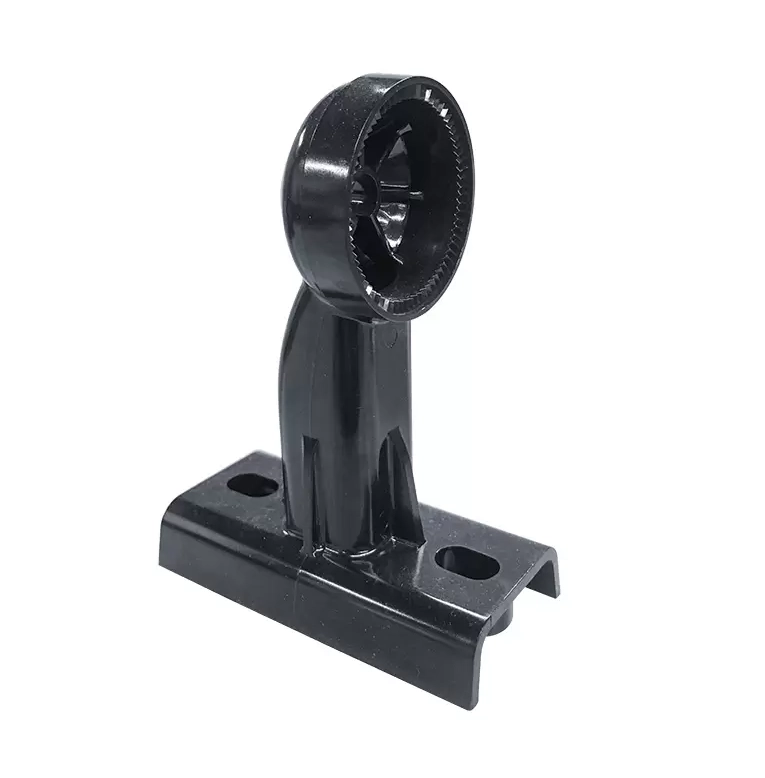Home > News > Industry News > How FAMA Traffic Brackets Ensure Long-Term Stability in Urban Signal Installations
How FAMA Traffic Brackets Ensure Long-Term Stability in Urban Signal Installations
Introduction: Ensuring Reliable Urban Traffic Signals
In modern urban environments, traffic signals are critical for road safety and efficient transportation. While the signal head captures attention, the mounting bracket is the foundation that ensures stability, alignment, and reliable operation. Failing brackets can lead to misaligned signals, vibration damage, operational downtime, and higher maintenance costs.
Yangzhou FAMA Intelligent Equipment Co., Ltd. (FAMA Traffic) has developed high-performance traffic light mounting brackets designed for long-term stability in urban environments. By combining durable materials, smart structural design, and environmental adaptation, these brackets support traffic lights through years of continuous use, even in challenging conditions.
1. Diverse Designs for Universal Compatibility
Urban intersections vary in layout, pole type, and signal configuration. FAMA Traffic brackets are designed for maximum flexibility and adaptability:
Flexible Structural Designs: Support round, square, or custom poles without additional adapters.
Multiple Installation Methods: Allow side-mount, top-mount, and angled installation, adapting to intersection geometry.
Modular Components: Facilitate easy upgrades or replacements without full disassembly.
Benefit: Municipalities can standardize bracket installations, simplify inventory, and reduce installation time.

2. Material Selection for Strength and Longevity
Long-term bracket stability starts with high-quality materials. FAMA Traffic brackets utilize:
High-Strength Metals: Provide robust support for heavy traffic signal heads.
Polycarbonate (PC) Composites: Offer impact resistance, absorbing shocks from wind or accidental collisions.
Corrosion-Resistant Coatings: Protect against rain, UV radiation, pollution, and coastal salt spray.
Result: Brackets maintain dimensional stability and mechanical strength, ensuring signals remain correctly aligned over time.
3. Weather-Resistant Design
Urban traffic signals face extreme weather conditions, including high winds, temperature swings, precipitation, and UV exposure. FAMA Traffic brackets are engineered to endure:
Powder-Coated Surfaces: Prevent rust and preserve aesthetics.
High-Temperature Tolerance: Materials withstand -40°C to 60°C without deformation.
Wind Load Resilience: Tested to resist strong winds while maintaining signal alignment.
Impact: Signal heads remain stable and operational, reducing downtime and maintenance frequency.
4. Structural Optimization for Reliability
The stability of traffic signals depends not only on materials but also on structural design:
Reinforced Mounting Points: Prevent stress concentrations at bolt interfaces.
Angled and Curved Supports: Reduce bending moments under load.
Vibration Damping Features: Minimize effects from traffic-induced vibrations, protecting signal electronics.
Benefit: Continuous signal alignment and reliable operation under dynamic urban conditions.
5. Installation Efficiency
FAMA Traffic brackets are designed for fast, secure, and repeatable installation:
Pre-Drilled Holes & Adjustable Clamps: Simplify alignment during installation.
Lightweight Modular Components: Reduce handling difficulties and speed up installation.
Compatibility with Existing Infrastructure: Allow retrofitting to both legacy and modern poles.
Outcome: Reduced installation time, lower labor costs, and minimal disruption to urban traffic.
6. Maintenance and Lifecycle Management
Even the most durable brackets require periodic inspections to maintain optimal performance:
1. Routine Checks: Every 6–12 months to ensure bolts are tight, coatings intact, and alignment correct.
2. Post-Storm Inspection: Assess for dents, scratches, or corrosion following extreme weather.
3. Modular Component Replacement: Swap damaged sections instead of replacing the full bracket.
4. Lubrication and Fastening: Keep mechanical joints secure against vibration and environmental stress.
Benefit: Maximizes service life, reduces overall maintenance costs, and ensures traffic signal reliability.

7. Smart City Integration Capabilities
Modern traffic systems increasingly leverage IoT and sensor-based management. FAMA Traffic brackets support:
Cable Management: Protect wiring from weather exposure and tampering.
Sensor Mounting Options: Accommodate cameras, environmental sensors, and communication modules.
Future-Ready Design: Standardized modular interfaces allow integration with upcoming traffic technologies.
Impact: Brackets provide both structural stability and technological adaptability, aligning with smart city objectives.
8. FAQ (Frequently Asked Questions)
Q1: What materials are used in FAMA Traffic brackets?
A1: High-strength metals combined with polycarbonate composites and powder-coated surfaces for strength, impact resistance, and corrosion protection.
Q2: Can these brackets be installed on existing poles?
A2: Yes, their flexible, modular design allows retrofitting on various pole types.
Q3: How do they handle extreme weather?
A3: Tested for high winds, UV exposure, temperature swings, and precipitation, ensuring signal stability.
Q4: What maintenance is required?
A4: Regular inspections every 6–12 months, with modular part replacement and fastener tightening as needed.
Q5: Are these brackets suitable for smart city traffic management systems?
A5: Yes, they support sensor integration, cable management, and future upgrades for intelligent traffic operations.
Conclusion
Traffic light mounting brackets are critical for urban signal stability and reliability. FAMA Traffic’s solutions provide:
High structural strength and long-term stability
Resistance to extreme weather and environmental stress
Installation efficiency and modular adaptability
Maintenance-friendly design for lifecycle cost reduction
Smart city integration for future-ready traffic management
By deploying FAMA Traffic brackets, cities can achieve safer intersections, reliable traffic signal operations, and reduced long-term maintenance costs, supporting their smart city infrastructure and making travel safer and smarter for everyone.
